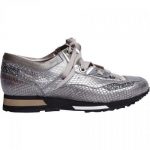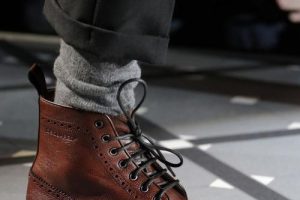Boots have long been a staple in the world of footwear, offering not only protection and functionality but also a wide range of styles to suit various needs and preferences. This comprehensive article delves into the rich diversity of boots, from snow boots designed to keep your feet warm in the harshest winter conditions to riding boots that have a rich history in equestrian sports, and rain boots that combine practicality with style. We will explore the characteristics, history, and the different types of boots that have become integral to our lives.
Introduction
Boots are a versatile form of footwear that can be found in wardrobes all around the world. They come in a multitude of styles and serve a variety of purposes, making them a popular choice for a wide range of activities and occasions. In this article, we will explore the diverse world of boots, highlighting some of the most well-known and beloved styles available today.
Snow Boots: Winter’s Best Companion
When winter’s chill sets in and snow blankets the ground, there’s no better footwear choice than snow boots. These boots are designed to keep your feet warm, dry, and comfortable in even the coldest and wettest conditions. Let’s take a closer look at what makes snow boots the perfect winter companion:
Features of Snow Boots:
- Insulation: Snow boots are typically lined with warm and insulating materials such as shearling, fleece, or Thinsulate. This ensures that your feet stay toasty even in sub-zero temperatures.
- Waterproof: To keep your feet dry in slushy snow and wet conditions, snow boots are often constructed with waterproof materials like rubber or treated leather.
- Traction: Snow boots feature sturdy, slip-resistant outsoles with deep treads to provide excellent traction on icy and snowy surfaces.
- High Cuffs: Many snow boots have high cuffs that extend above the ankles to prevent snow from entering the boots, keeping your feet warm and dry.
- Warmth Rating: Some snow boots come with a warmth rating that indicates the lowest temperature at which they can keep your feet warm. Look for a rating that suits your climate and intended use.
Types of Snow Boots:
- Classic Snow Boots: These are the traditional snow boots, often featuring a waterproof lower section and an insulated upper.
- Snow Hiking Boots: Designed for winter outdoor activities, these boots offer extra ankle support and traction for hiking in snowy conditions.
- Snowboard and Ski Boots: These specialized snow boots are designed for extreme cold and for use in snowboarding or skiing. They often have a hard outer shell and additional insulation.
- Fashion Snow Boots: Some snow boots are designed with style in mind, offering the same level of warmth and protection but with more fashionable designs.
Riding Boots: Elegance in Equestrian Tradition
Riding boots have a rich history in equestrian sports and have since become a symbol of timeless elegance. These boots are known for their distinctive features and high-quality materials. Let’s explore the world of riding boots:
Features of Riding Boots:
- Tall Shaft: Riding boots are known for their tall, straight shaft that typically reaches just below the knee. This design provides excellent leg and ankle support while horseback riding.
- Snug Fit: These boots have a snug and sleek fit to ensure minimal interference with the rider’s leg movements.
- Low Heel: Riding boots usually have a low, stacked heel to provide better stability and prevent the boot from slipping through the stirrup.
- Full-Length Zipper: Many riding boots have a full-length zipper at the back to make them easier to put on and take off.
Types of Riding Boots:
- Dressage Boots: Designed for dressage riders, these boots are often made of fine, smooth leather and have a stiff upper to provide extra support for the leg.
- Field Boots: Field boots are a versatile choice, suitable for various riding disciplines. They have laces at the front and a sleek appearance.
- Racing Boots: Jockeys wear racing boots, which are lightweight and have a distinctive, slim profile to minimize wind resistance.
- Western Boots: Western riders wear a unique style of riding boot, often with decorative details such as stitching, overlays, and pointed toes.
Rain Boots: Combining Style with Functionality
Rain boots, also known as wellies or gumboots, have come a long way from being purely functional to becoming a stylish choice for wet weather. These boots are a must-have for staying dry and comfortable during rainy days:
Features of Rain Boots:
- Waterproof: The most crucial feature of rain boots is their waterproof construction, typically made from rubber or other water-resistant materials.
- Traction Soles: Rain boots have outsoles designed to provide excellent grip and prevent slipping on wet surfaces.
- Easy to Clean: Rain boots are easy to clean and maintain, making them ideal for muddy and wet conditions.
- Variety of Styles: Modern rain boots come in a wide range of colors, patterns, and designs, allowing wearers to express their style even on rainy days.
Types of Rain Boots:
- Traditional Rain Boots: These are the classic knee-high rain boots that offer full protection from rain and puddles.
- Ankle Rain Boots: For a more casual and versatile look, ankle rain boots are a great choice. They offer protection without the bulk of knee-high boots.
- Fashion Rain Boots: Designed with style in mind, fashion rain boots often feature unique patterns and designs, making them suitable for everyday wear.
- Kids’ Rain Boots: Rain boots designed for children come in various fun and colorful designs, making rainy days an adventure for kids.
Combat Boots: Rugged and Versatile
Combat boots, originally designed for military use, have transcended their utilitarian roots to become a fashion statement. Their rugged appearance and durability make them a versatile choice for a wide range of outfits and occasions:
Features of Combat Boots:
- Durable Construction: Combat boots are known for their sturdy and long-lasting construction, often made from full-grain leather or synthetic materials.
- Lace-Up Closure: They typically feature a lace-up closure that allows for a customizable fit and adds to their rugged aesthetic.
- Flat Soles: Combat boots usually have flat, non-slip soles that provide comfort and stability during various activities.
- Ankle Support: The design of combat boots offers excellent ankle support, making them suitable for extended periods of walking or standing.
Types of Combat Boots:
- Classic Combat Boots: These are the iconic military-style combat boots, often with a plain toe and minimal embellishments.
- Fashion Combat Boots: Fashion-forward versions of combat boots come in various styles, including platform soles, chunky heels, and unique materials.
- Steel Toe Boots: Designed for heavy-duty work, steel toe combat boots offer extra protection for the toes.
- Hiking Boots: Some hiking boots have a combat boot-inspired design, offering durability and support for outdoor activities.
Cowboy Boots: A Western Icon
Cowboy boots are deeply rooted in American history and cowboy culture. These iconic boots are known for their distinctive style and have been worn by cowboys and cowgirls for generations. Let’s explore the unique characteristics and history of cowboy boots:
Features of Cowboy Boots:
- Pointed Toe: One of the most recognizable features of cowboy boots is their pointed, or “snip,” toe. This design makes it easier for riders to slip their feet into stirrups and provides a distinctive look.
- High Shaft: Cowboy boots have a high shaft that typically reaches halfway up the calf. This design offers leg protection and stability while horseback riding.
- Cuban Heel: Cowboy boots often feature a low, angled heel, known as a Cuban heel. This heel style adds height and provides a comfortable riding position.
- Decorative Details: Cowboy boots can be highly decorated with intricate stitching, leather tooling, and inlays. These details add to their visual appeal.
Types of Cowboy Boots:
- Traditional Cowboy Boots: These are the classic cowboy boots with a pointed toe, Cuban heel, and a tall shaft. They are often made from leather and are available in various colors.
- Western Fashion Boots: Western fashion boots draw inspiration from cowboy boots but often feature modern designs, unique materials, and colors for everyday wear.
- Roper Boots: Roper boots have a lower shaft than traditional cowboy boots, making them more comfortable for walking and suitable for various activities.
- Exotic Skin Cowboy Boots: Some cowboy boots are crafted from exotic animal skins, such as snakeskin, ostrich, or alligator, for a distinctive and luxurious look.
Hiking Boots: Conquering the Great Outdoors
Hiking boots are designed for outdoor enthusiasts and adventurers. They are built to withstand rugged terrain, provide support, and keep your feet comfortable during hikes. Let’s explore the key features and types of hiking boots:
Features of Hiking Boots:
- Ankle Support: Hiking boots provide excellent ankle support, which is essential for stability on uneven and rocky trails.
- Durable Construction: These boots are made from tough materials, such as full-grain leather or synthetic fabrics, to withstand rough terrain.
- Grippy Outsoles: Hiking boots have specialized outsoles with deep lugs for superior traction on various surfaces, including mud, rocks, and loose gravel.
- Waterproofing: Many hiking boots come with waterproof membranes to keep your feet dry during wet hikes and crossings.
- Toe Protection: Some hiking boots have reinforced toe caps to protect your toes from rocks and debris.
Types of Hiking Boots:
- Day Hiking Boots: These are lightweight and flexible boots designed for short day hikes on well-maintained trails.
- Backpacking Boots: Backpacking boots offer more support and are suitable for carrying heavier loads on multi-day treks.
- Mountaineering Boots: Designed for extreme conditions, mountaineering boots are built to withstand harsh weather and technical terrains, including ice and snow.
- Trail Running Shoes: While not traditional boots, some trail running shoes offer boot-like features for speed and agility on the trail.
Chelsea Boots: A Timeless Classic
Chelsea boots are a versatile and stylish choice that has stood the test of time. Known for their slip-on design and sleek appearance, Chelsea boots are a favorite for many. Let’s dive into the features and types of Chelsea boots:
Features of Chelsea Boots:
- Ankle-High Shaft: Chelsea boots have a short, ankle-high shaft with elastic side panels, making them easy to slip on and off.
- Sleek and Minimalist: These boots have a clean and minimalist design with a round or almond-shaped toe, suitable for both formal and casual occasions.
- Low Heel: Chelsea boots typically have a low heel, providing comfort and versatility for all-day wear.
- Pull Tab: A pull tab at the back of the boot assists with putting them on and taking them off.
Types of Chelsea Boots:
- Classic Chelsea Boots: These boots follow the traditional design, often made from leather or suede in neutral colors like black, brown, or tan.
- Fashion Chelsea Boots: Fashion-forward Chelsea boots come in a wide range of colors, materials, and styles, allowing wearers to express their individuality.
- Chelsea Work Boots: Some Chelsea boots are designed for work environments, featuring safety toe caps and durable construction.
Conclusion
The world of boots is vast and diverse, with each style offering unique features and catering to specific needs and preferences. Whether you’re navigating through snow, riding horses, braving the rain, exploring the great outdoors, or looking for a versatile and timeless addition to your wardrobe, there’s a boot style that fits the bill.
From the warmth and protection of snow boots to the elegance of riding boots, the practicality and style of rain boots, the ruggedness of combat boots, the Western charm of cowboy boots, the durability of hiking boots, and the versatility of Chelsea boots, boots have carved a special place in the world of footwear. Each type of boot has its own rich history and story to tell, reflecting the evolving needs and fashion preferences of generations.
So, whether you’re a cowboy on the ranch, an urbanite navigating city streets, a hiker seeking new trails, or someone who simply appreciates a good pair of boots, there’s a style that suits your lifestyle and makes a statement about who you are. Boots are not just footwear; they’re a symbol of tradition, fashion, and functionality, all wrapped up in a single, iconic package.
















Add Comment